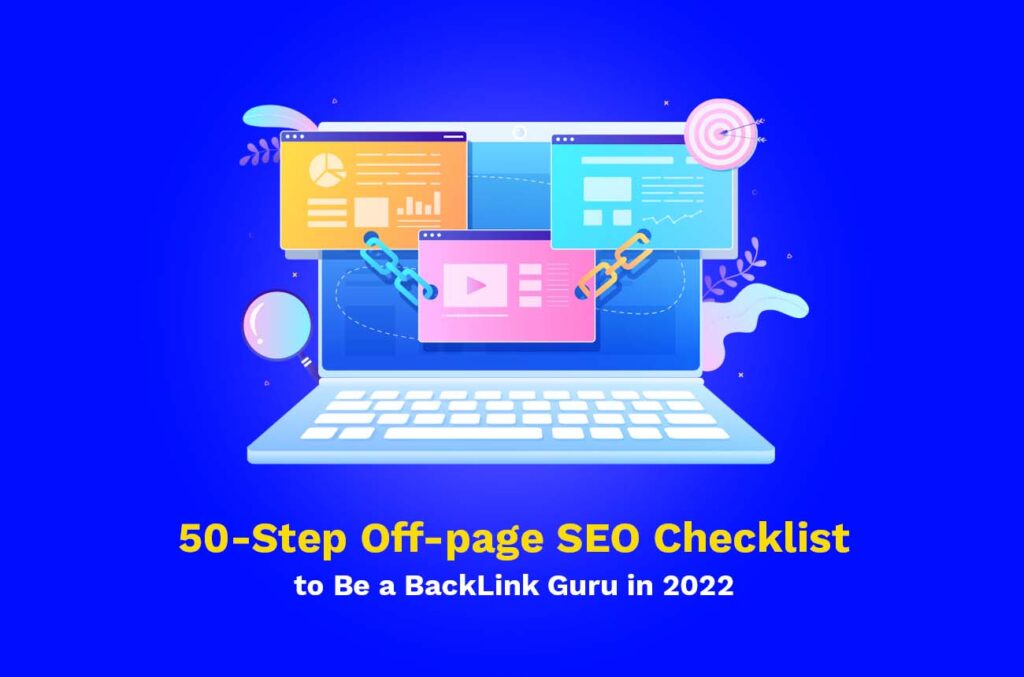Hello and welcome!
Do you need an off-page SEO checklist to build high-quality backlinks for your website? You’ve come to the correct place. From my seven (7) years of experience in off-page SEO, I have made this checklist.
This checklist has never disappointed me, and I can safely guarantee you that if you use it correctly, you will not be unhappy with the results. [A Link Building Case-Study By Following This Checklist]
Before starting, do you know what link building actually is?
The definition of link building is very simple. In easier words, link building is a way to enrich a blog by submitting proven references or, adding extra value by showing important references.
In SEO, link building is a powerful strategy to boost the rank of content and increase website visitors. To get the desired result, you have to follow a true Off-Page Optimization checklist that works great.
Tips:
If you are a beginner link builder, complete reading the whole blog to know the A-Z process. And if you have previous knowledge about link-building, download the checklist below, check it out and then scroll to the point you are unsure about.
Download the Advanced Off-Page SEO checklist
To gear up the link building, the very first thing you have to conduct is “build a strategy”. That means you have to analyze your website before building backlinks. See below to learn the best method to do it!
4 Essential Things to Consider Before an Off-page SEO Campaign
Without It, You Will Not Get 100% Output From Backlinks
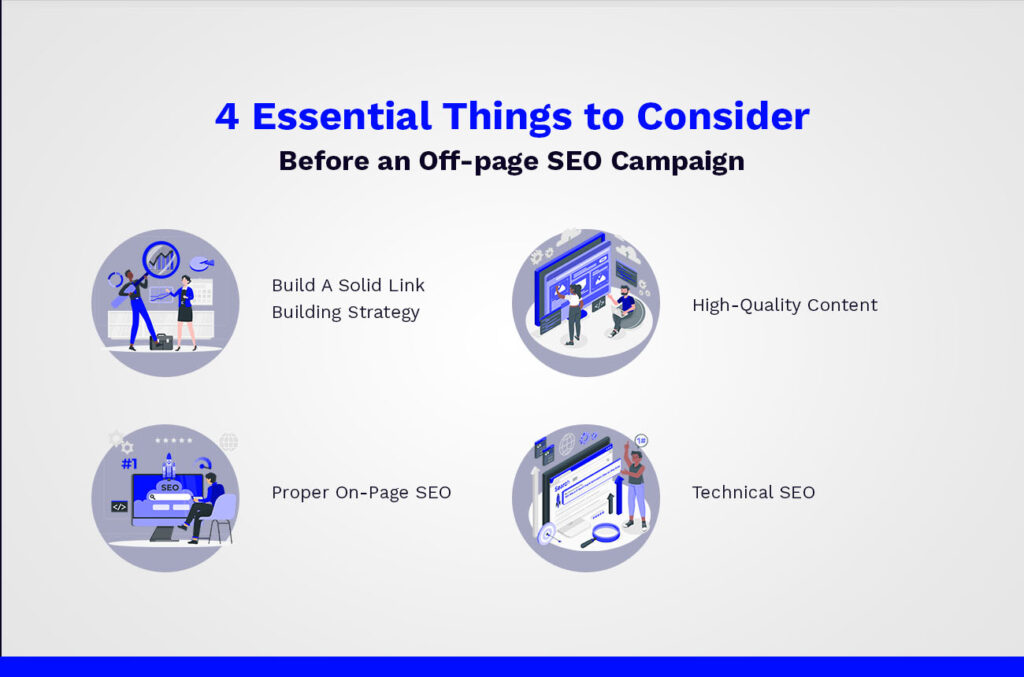
These four factors are critical because they influence the overall success of Off-Page SEO. If you do not properly set up your website well and build links for less important or, irrelevant content, it will be like “watering on a dead plant”.
So, to become a professional, you should always analyze your own website’s content first.
To analyze your website, you have to ensure some facts. Such as:
1. Build A Solid Link Building Strategy
Before launching a campaign, a link-building strategy is critical. Without a proper plan, you can’t utilize the full potential of a backlink campaign. If you are doing a client project or an individual project, no matter what, you must have a strategy for it.
If possible, make your strategy unique and different from other websites. If you can build a unique strategy that other bloggers are not following, that would be very helpful. It will be hard to replicate for other people in your industry.
KPI: From a link-building audit, you have to select the right page for building backlinks, plan anchor text, dofollow and nofollow ratio maintenance, and some other things.
2. High-Quality Content
The article you plan to work on for link-building must be very resourceful for a better result. There are many so-called experts who think a solid backlink itself is enough to shine up content, but their works fade over time.
This happens because poor content brings poor engagement. While organized content with rich information increases engagement and lowers the bounce rate. It gives a positive sign to Google. Isn’t that a good thing?
3. Proper On-Page SEO
You can compare On-Page SEO with salt. Sounds funny? Like salt, poor as well over-optimized On-Page content doesn’t match Google’s taste buds.
While quality content with proper On-Page SEO can beat high backlink profile content with average On-Page SEO. What if you do better link-building with proper On-page SEO? It will definitely bring the result you desire!
4. Technical SEO
Technical SEO is super important. If you can’t make sure your website is technically SEO friendly, your campaign will fall apart. You also have to ensure a fast loading speed to get the desired result after link building. As website speed is one of the key ranking factors, you can’t ignore it. There are so many web tools that provide free site speed testing.
So, if you do have concerns about your website speed, use website speed test tools like PageSpeed Insights and know your site loading speed. And if you find that your website speed is slow, fix it before applying link building strategy.
After ensuring these facts, it’s time to follow the checklist for which you are here. We’ll go Step-by-Step, following the flow and categories to make it easier for you. Let’s start with Backlink Audit Checklist!
The 50 Link-Building Checklist [Started]
- 1. Backlink Audit Checklist
- 2. Backlink Quality Measurement Checklist
- 3. Off-Page SEO Technical Checklist
- 4. Backlink Outreach Checklist
- 5. Content-Based Off-Page SEO Checklist
- 6. After Backlink Checklist
- 7. Backlink Marketing Checklist
1. Backlink Audit Checklist
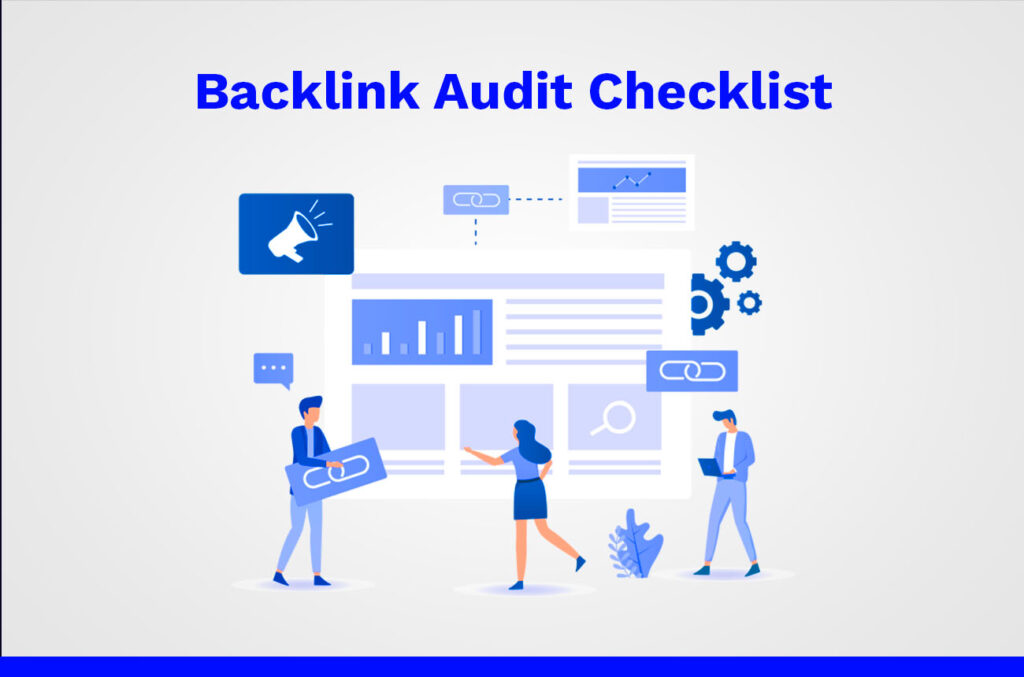
To enrich your website’s backlink profile, an existing backlink audit is a must! A backlink audit helps identify the quality of your current backlink profile, its relevancy, opportunities, and more. Follow the (4) checklist below to audit your current link profile.
1.1. Backlink Profile Audit
Before finding a website for backlinks, it is important to check your own website’s backlink profile. If your website has a good backlink profile, that is always preferable but if not, you have to do some work for it! So, how to audit a backlink profile?
To audit your website’s backlink profile, you may need some tools. You can use tools like Ahrefs. This tool will help you find all the backlinks you have acquired so far.
Once you export your current backlinks, you have to start checking all links one by one. You can also check your existing backlinks’ DoFollow to NoFollow Ratio. Maintaining a proper link ratio is important in the long run.
Note:
Our recommended nofollow/dofollow ratio is 30:70. Many nofollow links aren’t an issue, but all links dofollow seem spammy because most of the big sites provide backlinks with nofollow links.
1.2. Spammy/Low-Quality Link Identify

Spam links are like parasites. It gives almost no value to a website and sometimes can bring negative results. For that, you must find out your website’s spammy backlinks using Moz SEO tools.
Note: If there are spammy as well as low-quality backlinks on your website, use Google Search Console to disavow spammy links.
1.3. Broken/Lost Links Audit
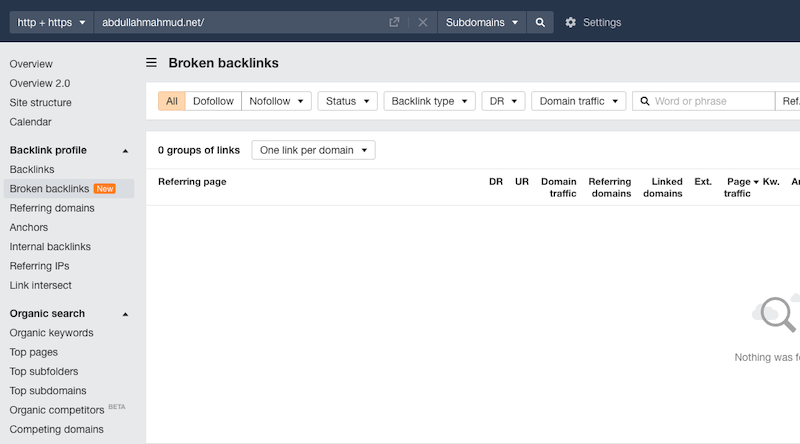
A link can be broken for many reasons. For example, your linked webpage may no longer exist, the URL may have changed, etc. Doesn’t matter what the reason is, a broken link is worth nothing, and sometimes it is considered a spam link.
For that, you have to check your website link frequently to ensure there is no broken link. But how to find broken links? There are a lot of tools that can help you track your website links. Here, we recommended Screaming Frog, which shows overall site health reports along with broken health reports. But if you have multipurpose SEO tools, you can use these too.
1.4. Competitors’ Backlink Profiles Audit
It is important to keep yourself one step ahead of the competitor. For that, you have to check your own and competitor’s website backlink profiles. Following analysis, if your website’s backlink strength is greater than that of your competitors, this is a good sign. Do backlinking like you used to do. And if you see your competitor’s backlink profile is stronger than yours, take note. You have to keep your opponent on track and find opportunities to build high-quality backlinks.
1.5. Find Backlink Gap From Your Competitors
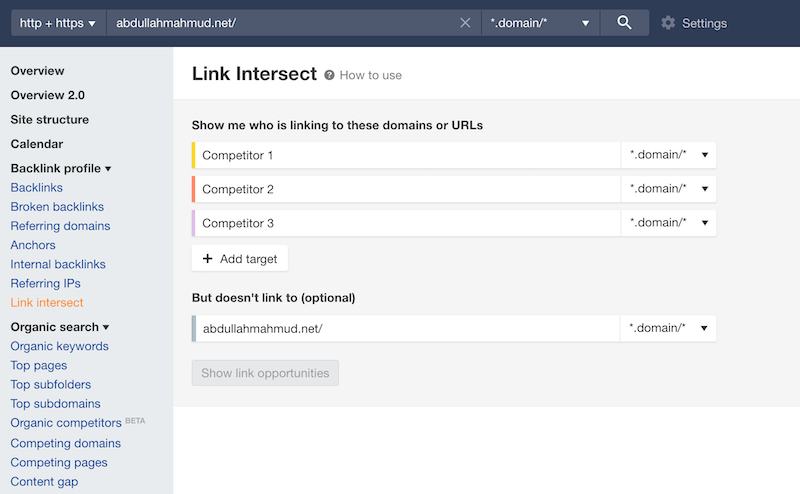
A backlink gap analysis determines how many quality backlinks you need to rank higher on SERP. So, you have to analyze your backlink profile and compare it with your competitor’s backlink profile to know your backlink requirement.
Here, you have to find out how many quality and relevant backlinks your competitors have that you may acquire. You can keep the list for reaching them, which will be needed in the outreach part of the backlink.
2. Backlink Quality Measurement Checklist
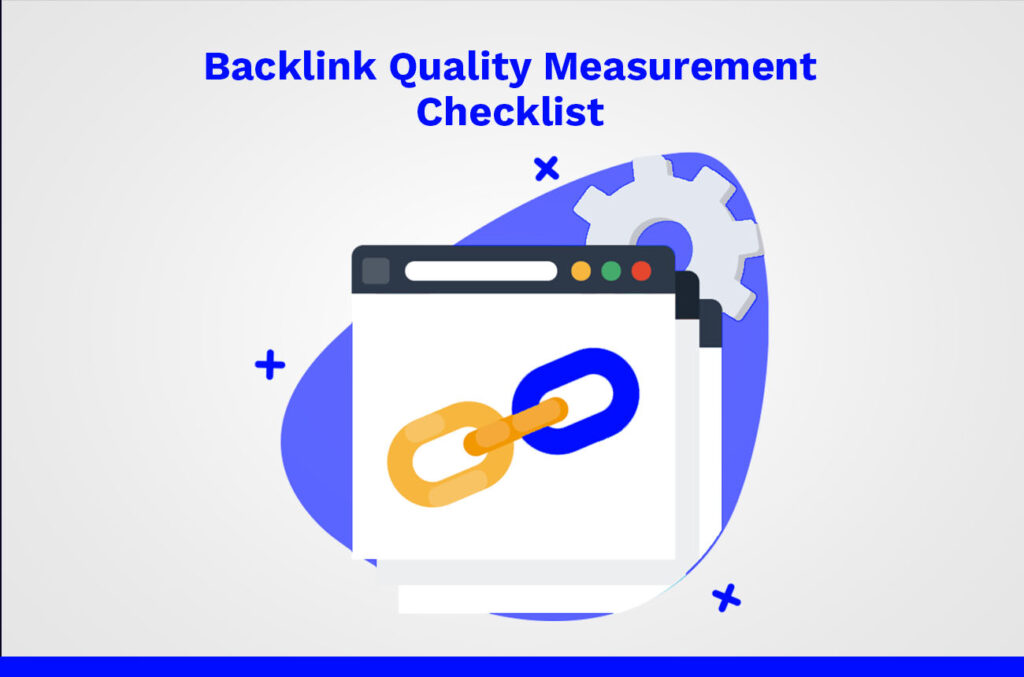
You shouldn’t consider a low-quality backlink for your website. It just increases the count of backlinks but adds almost no value. A high-quality backlink is more than equal to a hundred low-quality backlinks. That’s why you have to give your full effort to build a quality backlink.
Now the question is “how?”. That’s easy! Follow the quality checklist below and ensure the quality of your backlinks.
2.1. Check the Website Authority

Website authority is a measurement of a website’s strength. It is also referred as DA which stands for Domain Authority. There are a number of tools that show website authority like Moz, Ubersuggest, etc. that you can use to predict the strength of a website.
For the answer to the question in your mind, a website that has more DA is likely to be more valuable. So, always consider the website authority before link building.
👉Bonus Tips: Go for always high authority backlinks than you. For example, if your website’s DA is only 5, aim for at least a DA of 10 or higher. It will give you good value, and using this way; you can also save your backlink budget.
2.2. Check Outbound Link (OBL)
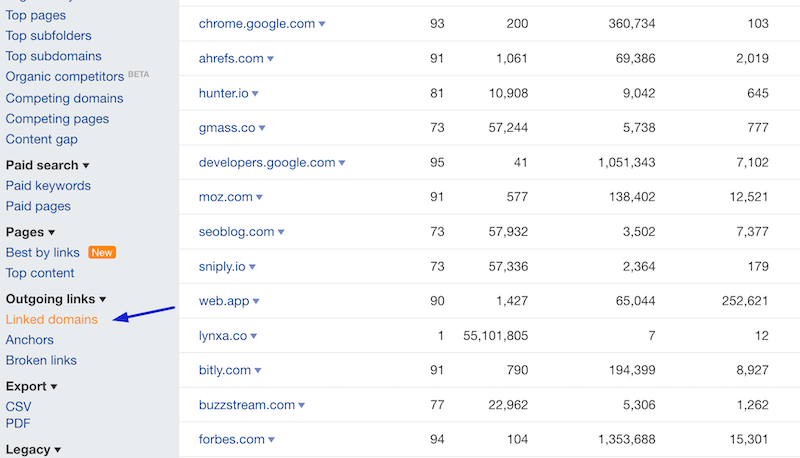
The word OBL stands for Outbound Link. You must check your targeted webpage’s OBL before making any decisions. It is because the lower OBL website gives better benefits in terms of backlinking.
Want to know how? Imagine a website containing a jug of backlink juice. Now, the website will share its juice with every outbound link. As a result, the lower the OBL of the website, the more backlink juice it will have.
So, choose websites that have less OBL to make your link valuable.
2.3. Identify PBN Websites

To be a professional link builder, you must have the ability to identify PBN (Private Blog Network). PBNs are a group of websites created with a view to building backlinks to websites. A backlink from a PBN website is not good for site health. For that, it is better to avoid it..
You can use Ahrefs Batch Analysis tools to check the website IP. If you find different sites with the same IP, you can skip them.
2.4. Check Content Quality
Good content always shines brighter. There are so benefits to it. If you manage to get a backlink from good content with rich information, it will definitely enrich your web page’s value.
In addition to this, backlinks from quality content increase engagement and increase the possibility of getting referral traffic from backlinked web pages.
2.5. Site Relevance
In modern SEO, forcing a link that is not relevant is a total waste of time and energy. Don’t do that. Before you begin reaching out, you must first compile a list of relevant websites. To enrich the value of your website, the total count of backlinks doesn’t matter, but relevant links from authority websites do.
2.6. Anchor Text Matching
Anchor text is a clickable text that uses for linking. You know that, right?
It is important to use appropriate anchor text because Google considers an irrelevant anchor as a spammy link. Using a wrong or irrelevant, sales anchor text is not a small mistake as it can erase the article from SERP and is also likely to get penalized by Google.
For your own site, always ensure the anchor text you use is relevant to the page you are linking to. For example: if you are linking to a “flower” related blog, use the exact keyword or LSI as anchor text, do not use a “fruit” related anchor here!
And when selecting a webpage for link building, check out the site’s anchor text relevance. If you build a link with a site that uses the wrong anchor text, your valuable backlink can have the same effect as a spam link. So be careful!
2.7. Blogging Activities
The website from which you wish to obtain a link should have an active blog with regularly updated quality content. If you manage to get a link from such a website, it will bring some referral traffic to your website.
And obviously, an active website always gets priority from Google. So, links from these sites can give you actual value.
2.8. Traffic Status and Source Check
When you are selecting a site to get a link, consider its traffic status. It will give you an idea of how popular the site is and also the potential to get traffic from the site. If a site has very limited traffic, what’s the point of having a link from that site?
There are a lot of tools to check website traffic like Ahrefs, Ubersuggest, Semrush, etc. that you can use.
In addition to this, you should also check the traffic source. If a site has a good amount of traffic from the US, UK, or any other country you are targeting, it will be beneficial for you.
2.9. Social Status
The social media presence of a website gives some notable benefits for a website. Though this is not a very effective ranking factor, it indicates that the website is very active and there are more referral traffic opportunities from social sites.
If a website is popular on social media, it means it has fresh, updated, and high-quality content. That’s why a backlink from such a website is always valuable.
3. Off-Page SEO Technical Checklist
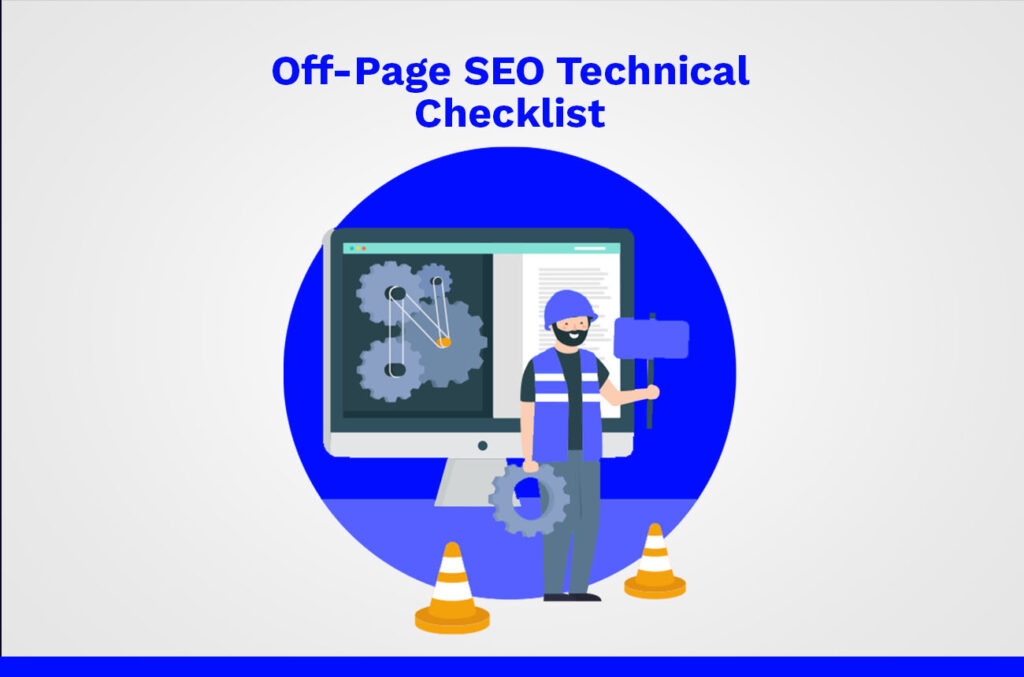
There are some technical factors that an OFF-Page Expert should keep in mind. These are Nofollow/Dofollow check, Indexability check, and SSL Check. Despite most medium to high-authority websites maintaining technical factors to keep good website health, it is important to have a cross-check for quality backlinking.
Let’s learn those important technical Off Page Optimization checklists a bit more deeply: 👇
3.1. Nofollow and Dofollow Status Check
It is important to ensure that the site you would like to get the link from, sets its outbound link as Dofollow. If not! you won’t get the link value you expect.
Nofollow links are not much valuable for ranking. They help in brand building and also give some referral traffic. But for SEO purposes, the backlink should be Dofollow.
If you are a beginner, you might get confused about, what Dofollow and Nofollow refer to?
Nofollow is an HTML attribute that instructs search engines not to follow the link. It means that if a website has a Nofollow link, it will not pass link juice to the linked site. On the other hand, Dofollow is the default link type. It means that if a website has a Dofollow link, it will pass link juice to the linked site.
So, how do I determine whether a website’s outbound links are dofollow or nofollow?
To check this, you have to click the right button on your mouse, and then “view page source”. Now there will be an HTML code page in front of you. Here you have to find the certain link that you are looking for. After finding the link, if you see a rel=”nofollow” attribute after the link, then the link is Nofollow. Otherwise, it’s a Dofollow link.
Tool: You can use this Chrome NoFollow tool to identify it easily. It’s Free!
3.2. Indexability check
Indexability means a search engine can read, crawl, and index a web page.
It is important to check indexability because if a search engine can’t index a page, there is no chance of that page ranking in SERP.
To check indexability, go to Google and type “site:example.com”. If a site is indexed, it will show all the indexed pages on the result.
3.3. SSL Check
SSL means Secure Sockets Layer. It is used to establish an encrypted connection between a web server and a web browser. It means that all the data that passes through that connection is secure.
Google gives more preference to those websites that have an SSL certificate. So, consider only those websites that have an SSL certificate for link building.
For checking, you can simply look at the website URL. If it starts with HTTPS, that means it has an SSL certificate. You should only take backlinks from a secure website.
4. Backlink Outreach Checklist

Outreach is the process of selecting websites to make an effort to get a link. The definition seems simple, right? But the process of outreach is not that easy. However, I have made a checklist for backlink outreach too that can help you understand it better!
4.1. Website Source
To be a professional link builder, you have to be creative enough to every possible resource. For example: using google Advanced search operator, seeking opportunities from the community, using social media, etc. Check out some tactics that I personally follow sourcing relevant sites:
4.1.1. Use Advanced Search Operators
People who know how to use advanced search options can save a lot of time doing research. So, if you want to save your valuable time doing research, you must know about this.
Google’s advanced search operator helps a lot to find relevant queries by narrowing down search results. There are so many advanced search operators, but the most common and usable pieces are
- site:website_name
- “search_quaries”
- allintile:
- intitle:
- inurl:
- allinurl
- – (keyword – excludable words)
Want to know how to use these Advanced Search Operators? You can read the Forbes article on how to find relevant bloggers in your niche. Also, Try it on your own! It will give you more practical knowledge.
4.1.2. Find Websites Using Social Media
Social media is a great place to find out information about the website’s owner and author, which can help you with link building. If you are not an expert-level link builder, then it might sound ineffective to you. But it is easier to find leads faster than searching on a Search Engine.
So, how do I use social media to collect lead information?
There are so many methods of collecting site sources using social media. Normally, I use Twitter and Linkedin, as these are two of the best tools for this case. Now, let me mention 3 methods that I use a lot while collecting site info.
- Method 1: Search relevant words on Twitter using hashtags. This helps me to find out people who are working on my relevant niche. From the results, it is possible to find out most
- Method 2: Post informative pieces on social sites with so many resources and hashtags. By doing this my post appears in front of people who work in my similar niche and when they engage with my post I collect their info.
- Method 3: Search for the relevant posts and read the comment to find out some people who work in my interest.
However, there are some other methods that can be used for finding site sources on social media. When you will try my 3 methods you will discover new tricks and learn these automatically.
4.1.3. Find Influencers
Collecting influencers’ data and info is very basic and must-do work in the outreach process. It is very important to find some influencers who are actively working in the same or similar niche that you are working on to build links.
To find an influencer who is working on your relevant niche, all you have to do is, search for a relevant keyword on Google. From the SERP, choose the most relevant site and explore these sites, to manage influencers’ contact and other info.
4.1.4. Join Communities and Forums
Being an active member of communities and forums helps a lot in collecting site sources. A community is a place where people with the same interest gather together, share their perspectives, and engage with each other. So, it is easier to find someone who works in the same or relevant niche.
4.2. Site/Prospect Qualify
After sourcing site information on a sheet, it’s time to narrow down the list by eliminating sites with bad practices. Here you have to qualify sites that contain quality content with proper On-page SEO, use appropriate anchors, have a decent traffic value, etc. If you forget how to quality or check a prospect’s quality you can read again 2 sections of the checklist.
4.3. Choose High Authority Websites
When you have a list of relevant websites that follow white-hat SEO, it’s time to find a way to reach out to these website authorities to ask for a link. But before that, you have to give priority to the authority website. For that, mark down the top authority website first and find the contact.
4.4. Find Contact Address
The best method of outreach to a website is sending mail. For that, first, you have to find out the email address. You can find it on the website’s “contact us” page. But in most cases, it doesn’t work well as most authority websites are operated by editors, and some websites keep their contact information secret.
To increase the chances of your backlink success, you have to manage the website owner’s contact information (for the company website, find the CEO & GM’s mail address). Here, you can use Google Maps to see if the website has an office, and if you are lucky, you may find the CEO/Owner’s information here.
Otherwise, you can search the website on social sites to know the site owner’s information. Most of the time researching social sites helps to find the website owner’s contact address.
4.5. Outreach with Email Signatures
A professional link building expert always gives priority to email signatures to make the email appearance stand out. If you don’t know what an email signature is, let me clear it up.
An email signature is a block of text, image, and necessary link that is appears at the bottom of the mail. Generally, there appear brand/person photos, contact information, and social sites link of a company/person who mailed.
You might be thinking, why should I make my email signature look great while mailing? The answer is simple, it catches the reader’s attention, which gives a positive impression about the mailed person/company, and that increases the chances of getting positive feedback.
4.6. Link Approach
There are many approaches to building backlinks. Here we will explain two types of link building approaches you can use. One is a Guest Post, and another is linking to an existing post. Let’s see this two individually.
- Guest Post
A guest post is a blog post that is written by a guest author and published on another person’s blog. Here, the guest author is a link builder who applies links in the blog post to get a backlink. To get a guest post backlink from a website, you have to converse with the site owner about it.
- Existing Post
Another link-building approach is to select a relevant existing post and ask for a backlink from the site owners. To do this, you can offer the site owner to link back using other relevant sites that you can reach out to, or you can offer some money for it.
4.7. Follow Up
After mailing about your link approach you have to follow up with the site owner (higher level management such as CEO/GM if company website). It is very common to not get feedback or a positive response. If you didn’t get any response you can send follow-up mail after a week and get in touch with them. However, at that time you have to keep mailing to other leads to have a backup.
4.8. Negotiation and Link Agreement
And finally, if you get a positive response from the site’s authority, it’s time to make an agreement for your backlink. Getting backlinks from an authority site is not an easy task, and in most cases, it is not free. You have to gently ask what they want in exchange for giving a backlink to your site. Or, you can offer some blog posts that will be written by your site in exchange for a backlink from them. In most cases, the agreement is made by offering an honorarium.
Once you have the agreement, you have to start preparing an article for the website. Let’s see what you should consider when writing an article for a backlink website.
5. Content-Based Off-Page SEO Checklist
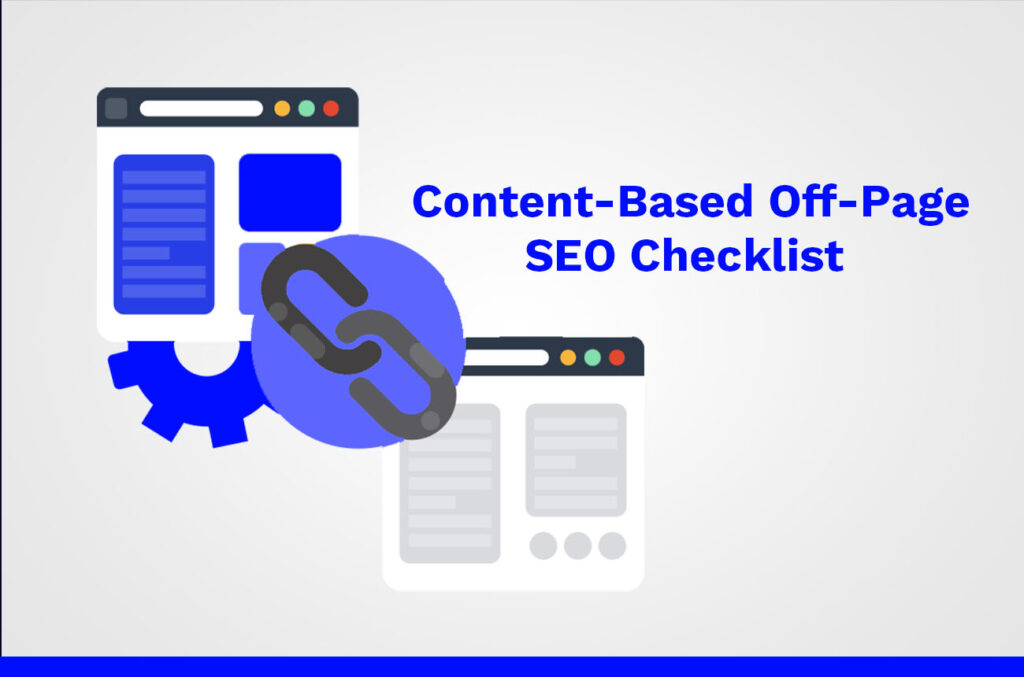
Topic pitching is important. According to my observation, a good topic helps to get responses 2x to 3x times better. If you have managed to make an agreement to do guest posting, then you will need this checklist. Don’t go for trading writing make your pitching unique.
As you will not have access to edit content frequently after submitting, you must create top-notch, SEO-friendly content that includes a properly planned linking strategy. Now, see the checklist below to learn how to prepare the perfect guest post content:
5.1. Follow Skyscraper Technique (Build Linkable Asset)
To build a linkable asset, the Skyscraper Technique is great. If followed correctly, it can give you surprising results on SERP.
The technique starts with finding top-ranked content with so many backlinks but has some silly content mistakes and a lack of rich information. After that, you have to create a better copy compared to the top-ranked one and add better backlinks to make the content more valuable.
5.2. Types of Content/Topic Pitching
By keeping the Skyscraper Technique in your mind, you have to select content types for the guest post. Here, you have to choose the types of content that you can use to promote your website.
5.3. Create the Right Content for Your Links
Content planning is important for backlinks. You have to create well-written, informative content with proper link placement. Here, the content should be relevant to the webpage that you are planning to link, but the keywords should be different to encourage users to click on the link to know more.
5.4. Add Infographics and Visuals
Readers and website owners love infographics and visuals because it help them understand better and reduce boredom while reading. Which ultimately increases engagement. Not only that, Google gives priority to this content, which contains meaningful infographics and visuals.
For that, you must use proper photos, videos, and infographics in your blog post. Infographics also help with link variation.
5.5. Add Relevant Internal/External Linking
You should know that Google prefers blogs with natural internal and external links. To make your guest post more natural, you have to add some relevant internal links that will give benefits to the linked website and fewer external links (backlinks).
5.6. Writing About Trend Topics
Addingrelevant trending topics increases blog traffic potential and keeps content up-to-date. Not only that, it makes a blog post more engaging for the readers, which gives a positive signal to Google. Thus, do not forget to add relevant trendy topics to your blog if available. Trending topics also help guest-posts be accepted.
5.7. Find Topics from People’s Questions
Knowing people’s questions and answering the topic on a blog increase the value of the content to the people who are searching for information. For that, you must find out what information people are looking for by searching your chosen keyword. There are a lot of ways to learn about people’s concerns about your topic, but personally, I prefer Quora and Reddit.
5.8. Build Backlinks by Generating High-Quality Content
The best thing about content-based link building is, you can place your website’s link anywhere you want. For that, you have to generate high-quality content by adding your website link in the best place. Here, you can use tricky words to twitch the reader’s attention to your website’s anchor.
5.9. Content Tracking
It’s always fascinating to see the result of hard work. Luckily, you can track referral traffic from backlinks using some content tracking tools like UTM, Shortlink, Lynxa, etc. So, if you want to keep track of your backlinks, use a content tracking tool.
5.10. Content Submission
When your guest post content is ready, you have to check everything again to be 100% sure about the quality, proper link placement, and relevancy. And then, it’s time to submit the content.
5.11. Deal Close (Live Backlink)
You should not close your deal until your backlink content is indexed and visible on Google. Not only that, you have to check the content’s overall SEO too before closing the deal.
Now, the question is, how should you check the backlink content status after publishing? Continue reading to get the answer!
6. After Backlink Checklist
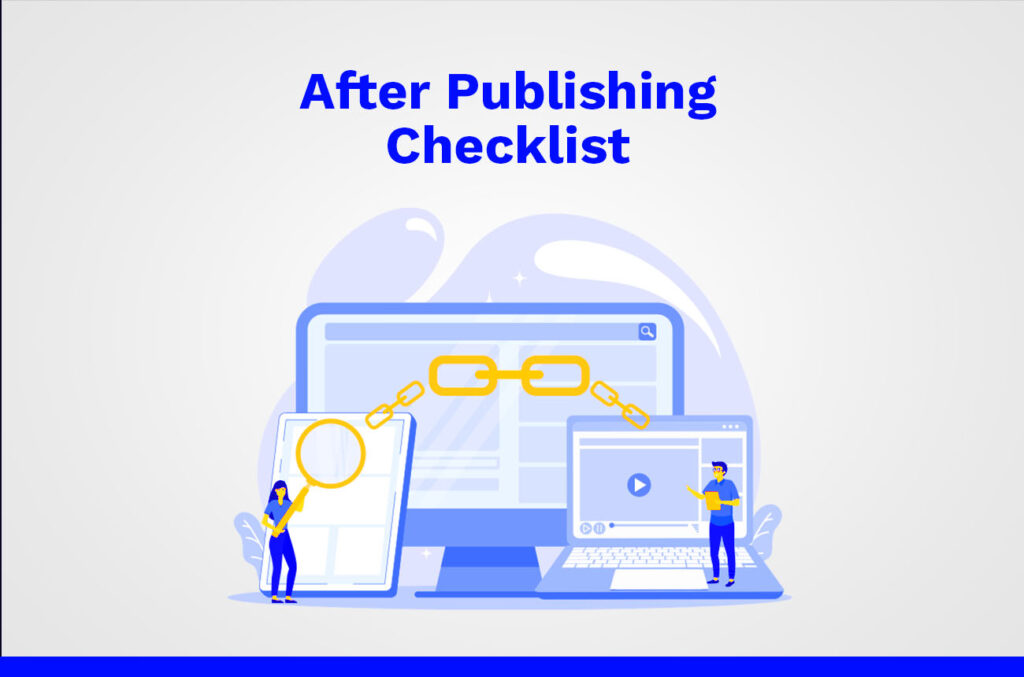
You must check the backlink status after it is published on the website. There are a lot of things to check to know if the article is well organized or not. To enrich your backlink performance and keep it on track, follow the checklist below:
6.1. Cross-check the article format and live link
The first thing you have to do is cross-check the whole article. To check, you have to keep attention mainly on four points.
6.1.1. SEO-Friendly URL
The article URL must be SEO-friendly. It means the article URL should be like “example.com/primary-keyword”.
6.1.2. Heading Format
After that, you have to check the heading format. Here, the heading should have a natural flow. Here if you see that the article heading format is not okay, you can message the author before closing the deal.
6.1.3. Media/Images
Checking images is also a necessary factor. Here, ensure the website image is relevant, has the necessary gaps and proper alt text is used.
6.1.4. Link Break
Lastly, you have to check the website link break. The post should not have many links in one paragraph or, nearby. Especially around the backlink space.
6.2. Live Status Monitor (Weekly and Monthly)
As not every people keeps track of backlinks, some authors break deals and remove backlinks after a certain period of time. For that, you must check your backlink status at least once a month. To check backlink status you can use tools like: https://www.linkody.com/. Using this tool, you can see all your backlink statuses in one place.
6.3. Index Check (If not submit for index)
If your content is not indexed, then there will be no backlink value for your website. That’s why you must check the published backlink article index status. You can simply check the index status using the Google search bar by typing “Site:” and then the article URL. After that, if you see the article in the search results, then the article is indexed; otherwise, it is not.
6.4. Update Profile (Listing, Directory)
For listing and directory-type post backlinks, it can be necessary to update the site/brand’s profile after certain periods. Normally this situation arises when your website’s statistical data changes over time, which is mentioned on the backlink. To deal with this type of situation, you must contact the website authority with a request to update your brand/website profile.
6.5. Lost Link Audit
Lost link and removal is common. It is not uncommon to lose a backlink, and that’s why a lost link audit is a must. The ultimate goal of the lost link audit is to find out the reason why the link is not live. After getting the audit report, you can take the necessary action to make the link active again.
7. Backlink Marketing Checklist
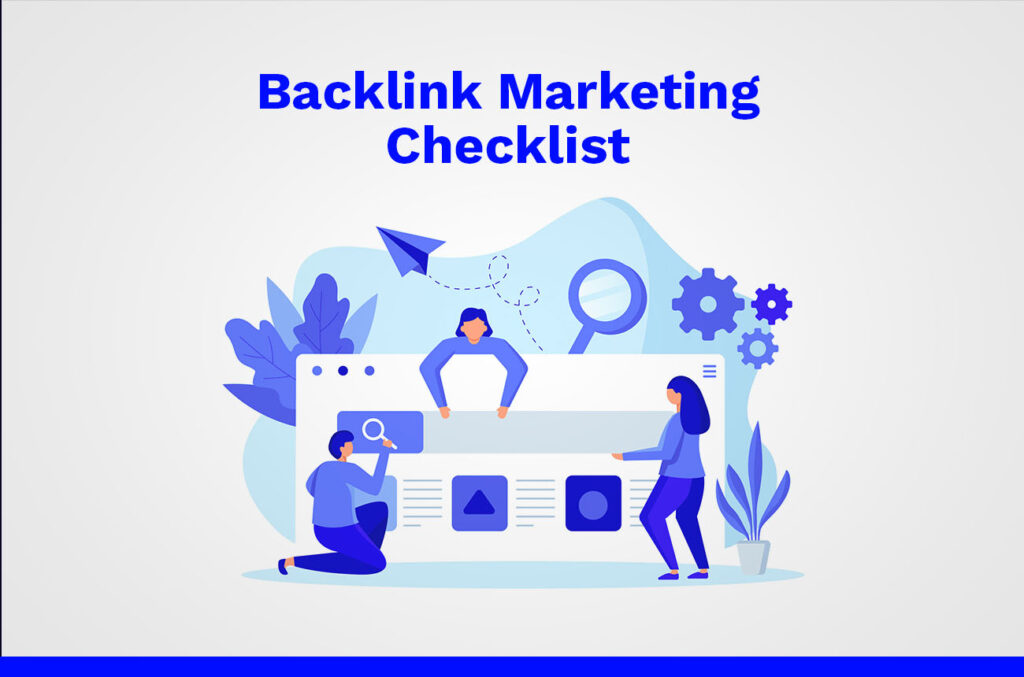
Very often, I promote content after publishing on big sites. It helps a lot when taking links from other big sites. When they see big sites accept our articles, they feel confident because they don’t have a large team to fact-check all of our articles.
7.1 Promote Content with Paid Ads and on Social Media
For a guest post, it will be a smart move to share the post on social media and even promote it with paid ADs. By promoting the post, you will get some referral traffic, which will increase your backlink value.
However, for existing-post backlinks, it is not necessary to use paid Ads. But, if the referral traffic rate is high and traffics are coming to your important webpage, then you should definitely go for it.
7.2 Press Release (PR)
A Press Release (PR) is a written or recorded communication that news media professionals use to announce something noteworthy. For link building, PR is a great way to do it. You can connect to a media company to show that your content is worth mentioning or make a deal for sharing your website/guest post link.
When your guest post is live on Google, you can use PR media to mention the guest post link in the newsletter. Now, you may be thinking, why ask for mentioning a guest post instate of your own blog? It is because, a guest post is one of the best ways to promote a website through other’s blogs and if the guest post gets boosted by PR, it will indirectly give you huge benefits.
7.3 Get Interviewed and Podcasting
The podcast is audio content, which is the opposite of video content. If you don’t hear about it, you might be surprised at how podcasting can give you link-building benefits. When someone mentions a website name in the podcast, it’s branding. And in the podcast description, if you anchor the site URL, it gives a backlink to a site.
Interviews and podcasting after your backlink is live can give you benefits because they help promote your content and get you extra backlinks. Here, if you do podcasting to refer a guest post, you are ultimately increasing your backlink quality and promoting a post that is promoting your website.
7.4 Tire Backlink
Tire backlink is a beautiful strategy for building a very powerful backlink. In easier words, Tire Backlink means building backlinks for the content that is giving you backlinks. You might be thinking, why should you build links for backlink content instead of building direct backlinks?
Search engines nowadays give priority to quality over quantity. So your ultimate goal should be building quality backlinks. Right? In addition, if you build too many backlinks for a webpage, that is a practice of Black Hat SEO.
So, after your guest post/ backlink is live, follow the tire backlink strategy and get more link juice.
7.5 Case Study
Case studies can be extremely useful in demonstrating the value that a guest post can bring to a website or blog. By providing concrete examples of the benefits that a guest post can bring, case studies can help to increase the perceived value of guest posts in the eyes of potential publishers.
Additionally, case studies can help to dispel any myths or misconceptions that potential publishers may have about guest posting, thus making it more likely that they will be willing to consider a guest post from you.
7.6 Nofollow Dofollow Ratio Maintain
Finally, you should look at the nofollow/dofollow ratio of published backlink content. It appears unnatural if backlink content contains more nofollow links and fewer dofollow links. So, if you notice the dofollow/nofollow ratio of your backlink content is not balanced, contact your backlink provider.
FAQ
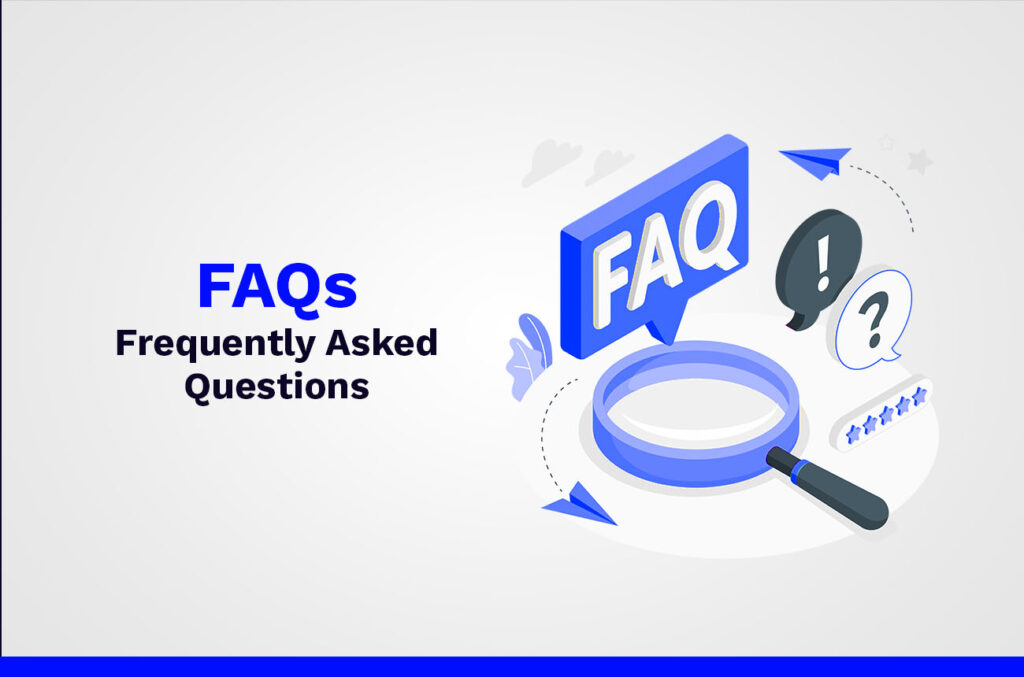
Why is Off-Page SEO Important for a Website?
Off-Page SEO is important for websites because it helps improve a site’s visibility and ranking in search engine results pages (SERPs). By building high-quality backlinks to a site, one can increase their chances of appearing in the top results for relevant queries. Additionally, link building can help to improve the overall authority and trustworthiness of a site, which can further boost a website’s performance.
What Are the Common Link-building Techniques?
There are a number of common link-building techniques that can be used to improve your website’s performance. These include guest posting, directory submissions, and social media outreach. Additionally, many Off-Page SEO experts also recommend conducting a link audit to identify and remove any harmful or low-quality links pointing to your site.
What Are the Ground Rules for Off-Page Optimization?
There are a few ground rules that should be followed when doing Off-Page SEO on your site. First and foremost, it’s important to only build links from high-quality websites that are relevant to your niche. Additionally, you should avoid using any black-hat link-building tactics, such as link farms or link buying. Finally, you should always keep an eye on your link profile and disavow any spammy or low-quality links.
Why Do You Need an Off-Page SEO Checklist?
An Off-Site SEO checklist can be incredibly useful for keeping track of your progress and ensuring that you’re following best practices. Additionally, a checklist can help to ensure that you’re not forgetting any important steps in your link-building process.
The link building is dead. Is that true?
No, the link-building is not dead. Link building is still an important part of SEO, and it can be a very effective way to improve your site’s visibility and ranking. However, it’s important to note that link building is just one part of a larger SEO strategy.

